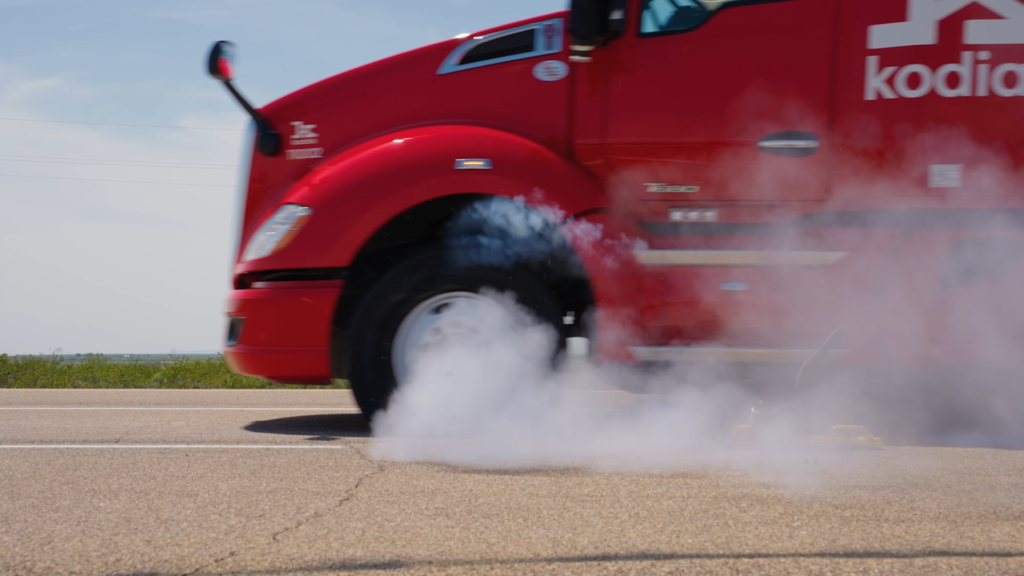Self-driving truck company Kodiak Robotics has released a video showing how its autonomous technology, the Kodiak Driver, can maintain complete control of the truck, even when suffering a catastrophic tire blowout. The video shows a Kodiak self-driving truck rolling over a test rig that punctures the front driver-side tire of a Kodiak Class 8 tractor, while the autonomous technology is engaged. Even after the tire is destroyed, the Kodiak Driver stays in control and brings the truck to a safe and complete stop while maintaining its lane.
Tire blowouts are among the major safety risks that can occur on the road. A front tire blowout instantly causes trucks to behave erratically and unpredictably, potentially resulting in a loss of control, jackknifing, or other extremely dangerous situations. One of the safety benefits of Kodiak’s self-driving trucks is the ability to instantly react to the change in vehicle dynamics. In the case of the blown tire, the truck compensates for the failed tire by applying an entirely different steering angle. This exercise has been repeated multiple times and Kodiak truck’s consistent ability to maintain its lane positioning illustrates the adaptability and control of the Kodiak Driver.
“People ask us all the time ‘what happens if you blow a tire?’, and we wanted to showcase how the Kodiak Driver can maintain control more precisely than a traditional truck, even with a completely destroyed tire,” said Don Burnette, founder and CEO, Kodiak Robotics. “We can’t control the hazards trucks will face on the open road, but we can control how the trucks behave when a critical situation occurs. By demonstrating that the Kodiak Driver can maintain complete control under such duress, we’re showing the world just how safe this technology is designed to be.”
This blown tire demonstration relies on Kodiak’s fallback technology that guides Kodiak’s self-driving trucks to a safe stop in the event of a critical system failure. Upon experiencing the blowout, the autonomous system can immediately detect the tire fault, identify and adapt to the new vehicle dynamics, initiate the fallback protocol, trigger the hazard lights to turn on, and bring the truck to a stop within the lane. The speed of detection and level of control is critical for ensuring the safety of all motorists.
In order to clearly demonstrate the Kodiak Driver’s ability to maintain precise control in such a volatile situation, Kodiak chose to execute an in-lane fallback at a proving ground in Texas. If a tire were to blow in a real-world setting, the truck would automatically execute its fallback plan, typically pulling it to a safe stop on the side of the road.
The demonstration follows recent partnership announcements with IKEA, Werner and Pilot Company. The company delivers freight daily for its customers along four routes in Texas and Oklahoma, operating autonomously on the highway portions of the routes.


